Babies without teeth can eat plenty of soft, nutritious foods. Ripe fruits like bananas and avocados are perfect as they mash easily with their gums. Steamed sweet potatoes, peas, and carrots provide essential vitamins and are safe when cooked until soft. Scrambled eggs offer protein for growth and can be gummed. Overcooked pasta is another great option for self-feeding. Cutting foods into small, bite-sized pieces helps prevent choking. Encourage a variety of flavors and textures to keep mealtime exciting and promote healthy habits. You'll discover even more tasty ideas and tips for feeding your little one.
Key Takeaways
- Babies without teeth can eat soft foods like mashed bananas, avocados, and well-cooked sweet potatoes, which are easy to gum and swallow.
- Scrambled eggs provide protein and can be easily gummed, making them a suitable option for toothless babies.
- Cooked and overcooked pasta, such as elbow macaroni, is manageable for self-feeding and safe for babies without teeth.
- Ripe fruits like apples can be steamed or pureed to reduce choking hazards while providing essential nutrients and fiber.
Age for Finger Foods
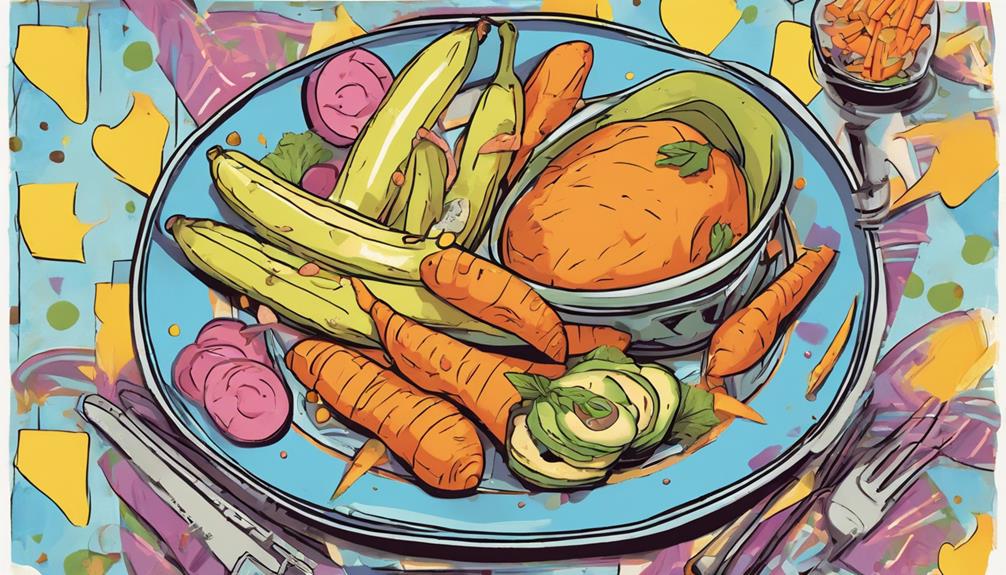
Babies usually show they're ready for finger foods between 6 to 9 months, with most hitting that milestone around 7 to 8 months.
At this stage, your baby may exhibit signs like sitting up independently and reaching for food, indicating they're keen to eat finger foods. While babies without teeth can still enjoy nutritious baby options, it's important to focus on soft foods that are easy to manage.
As you begin introducing finger foods, prioritize items that promote safe chewing and limit choking hazards. Soft fruits, well-cooked vegetables, and small pieces of soft bread can be great choices.
Chewing Without Teeth
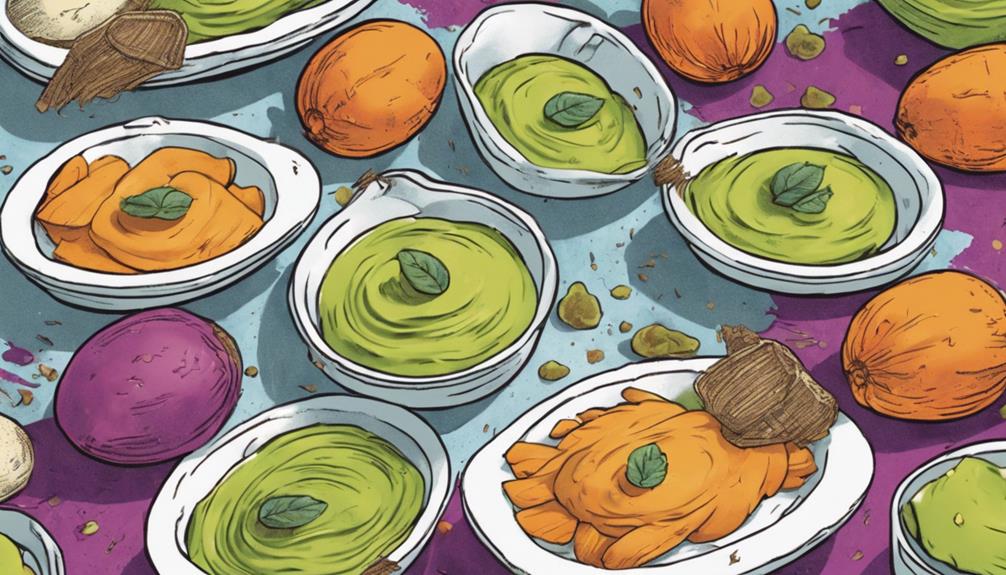
You might be surprised to learn that babies can effectively chew and mash food even without teeth.
They use their gums, tongue, and jaw movements to handle soft foods like avocados and bananas.
Understanding the right techniques and suitable options helps guarantee your little one enjoys safe and nutritious meals.
Chewing Techniques Explained
Even without teeth, infants can effectively chew by utilizing their gums, tongue, and jaw movements to process a range of soft foods. Their gums are surprisingly powerful, allowing them to mash and break down various textures for safe swallowing.
Here are some key techniques to help your baby chew:
- Gum Power: Babies use their gums to mash soft foods, which is essential for oral development.
- Tongue Action: The tongue helps move food around in the mouth, mixing it with saliva for easier swallowing.
- Jaw Movements: Up-and-down jaw movements mimic chewing, allowing your baby to break down food into manageable pieces.
- Bite-sized Pieces: Offer foods in small, bite-sized pieces, like mashed food, to encourage exploration and independence.
Offering foods like soft fruits (bananas, avocados), cooked vegetables (sweet potatoes, carrots), and scrambled eggs can enhance this chewing experience.
Exploring different textures not only makes mealtime enjoyable but also supports your baby's oral development and acceptance of various flavors.
Suitable Soft Foods
Choosing suitable soft foods allows infants without teeth to safely enjoy mealtime while exploring new textures and flavors. Soft foods are perfect for babies without teeth, as they can effectively chew using their gums.
Start with ripe fruits like bananas and avocados, which aren't only easy to mash but also packed with crucial nutrients like potassium and healthy fats.
Next, incorporate cooked vegetables into their diet. Steamed or boiled sweet potatoes, peas, and carrots provide important vitamins and minerals while offering a manageable texture for little ones.
Scrambled eggs are another great option, delivering protein that can be easily gummed and swallowed, introducing new flavors along the way.
Don't forget about soft pasta! Overcooked elbow macaroni or fusilli served with a mild sauce presents a perfectly manageable texture that encourages self-feeding.
This not only promotes independence but also helps your baby explore different textures and flavors in a safe manner. By selecting these soft foods, you guarantee your baby gets the crucial nutrients they need while enjoying their mealtime adventure.
Introducing Finger Foods
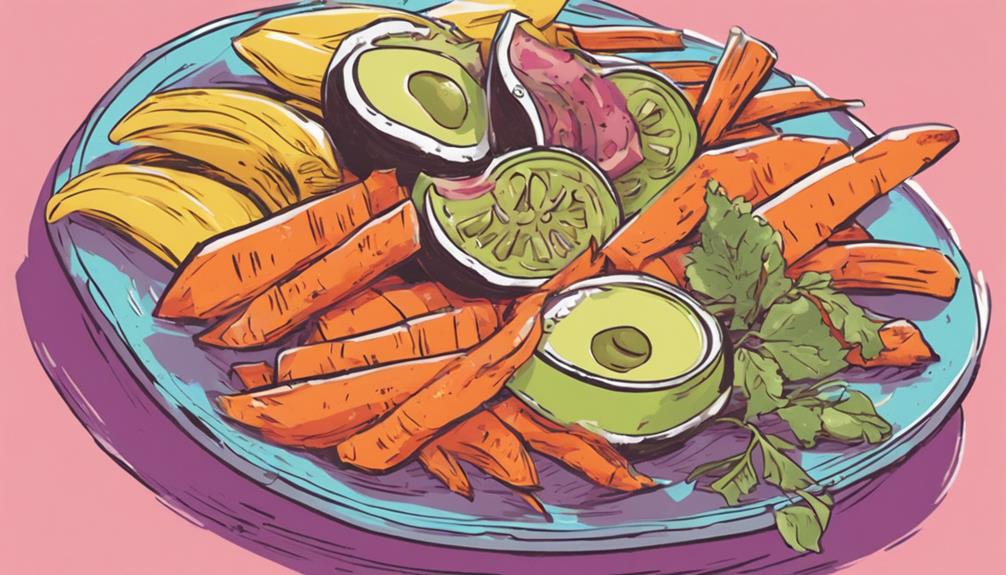
Around 6 to 9 months, babies can start enjoying finger foods, allowing them to explore new textures and flavors while developing their self-feeding skills.
Introducing finger foods for babies is exciting, but it's vital to guarantee safety and health. Here are some tips to keep in mind:
- Choose Soft Foods: Opt for soft, baby-ready-to-eat options like ripe bananas, cooked sweet potatoes, or avocado that can be easily mashed with their gums.
- Cut into Small Pieces: Make certain to cut foods into small, bite-sized pieces (about the size of a pea) to minimize the choking hazard.
- Introduce Gradually: Introduce new finger foods one at a time and wait 3 to 5 days between new items to monitor for allergies.
- Supervise During Mealtime: Always keep an eye on your baby while they're eating, as supervision during mealtime is essential to guarantee safety and encourage exploration.
Safe Finger Food Options

Safe finger food options for babies without teeth include a variety of soft, easily manageable foods that support their exploration of new textures and tastes.
Start with baby finger food ideas like mashed banana or ripe fruits such as avocados, which are perfect for little ones to gum. Cooked vegetables, like sweet potatoes and carrots, should be steamed or boiled until soft, making them easy to chew and swallow.
Scrambled eggs are another excellent choice, offering a healthy finger food packed with protein. Small pieces of cooked pasta, like elbow macaroni or fusilli, provide a fun texture for your baby to explore while being manageable. Always keep in mind potential food allergies when introducing new foods.
For a delightful treat, consider homemade baby biscuits or cereal puffs, which dissolve easily in the mouth and encourage self-feeding skills. These soft finger foods not only promote independence but also guarantee your baby gets the nutrition they need.
As you explore these first finger foods, keep an eye on your baby's reactions and enjoy this exciting stage of development together!
Sweet Potato and Apple

Sweet potatoes and apples pack a nutritious punch, offering essential vitamins and minerals for your little one.
When you prepare them properly, they become soft and easy to manage, making mealtime enjoyable for babies without teeth.
Let's explore how to serve these tasty options and the health benefits they bring.
Nutritional Benefits Explained
Both sweet potatoes and apples pack a nutritional punch, offering essential vitamins and minerals that support your baby's growth and immune health.
These soft finger foods are perfect for little ones without teeth, as they're easy to digest and provide numerous benefits.
Here are four key nutritional benefits of sweet potatoes and apples:
- Protein and Vitamin C: Sweet potatoes are rich in protein and vitamin C, crucial for your baby's immune system and overall development.
- High Fiber: Apples contain high fiber, promoting healthy digestion and preventing constipation, ensuring your baby feels comfortable.
- Diverse Flavors: Introducing these foods exposes your baby to diverse flavors and textures, helping to establish healthy eating habits early on.
- Easy to Digest: When prepared properly, both sweet potatoes and apples become soft and manageable, making them ideal options for babies to explore with their gums.
Combining sweet potatoes and apples not only enhances their nutritional value but also makes mealtime fun and engaging for your little one.
Preparation and Serving Tips
To prepare sweet potatoes and apples for your baby, steam or bake them until they're soft enough for easy gumming and swallowing. Sweet potatoes should be peeled and the skin removed to enhance digestibility and prevent choking hazards. For apples, peel and either mash them or cut them into small, manageable pieces. This way, your baby can safely explore different textures while enjoying these soft finger foods.
Once prepared, serve the sweet potato and apple mixture at room temperature. This not only avoids burns but also creates a comfortable eating experience for your little one. The combination of sweet potatoes and apples offers essential vitamins, such as beta-carotene from sweet potatoes and fiber from apples, which supports healthy growth and digestion.
When managing textures, start with smooth purees and gradually introduce small chunks as your baby becomes more comfortable with eating. Remember, the goal is to make mealtime enjoyable and safe.
Banana and Avocado
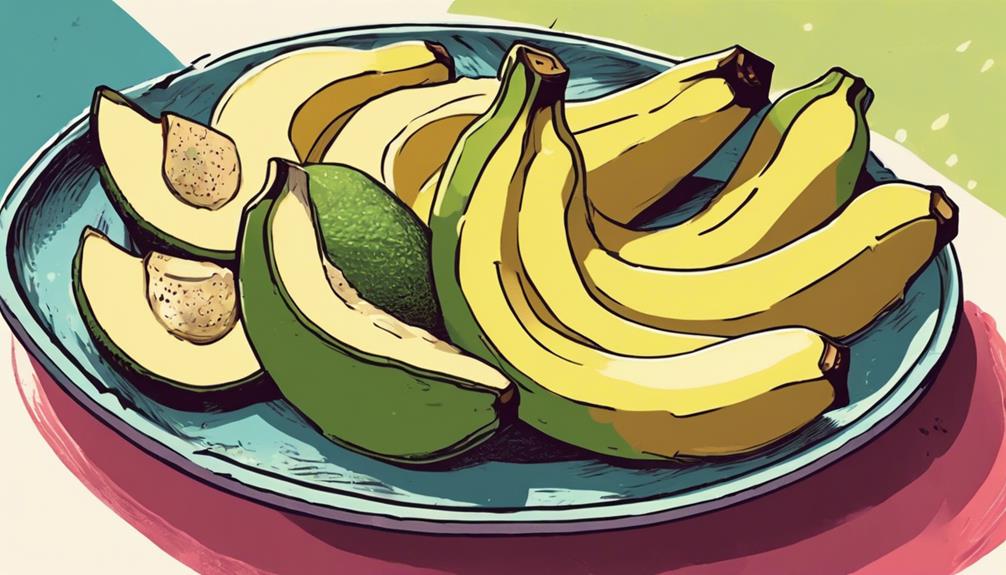
Bananas and avocados make excellent finger foods for babies without teeth, as their soft textures allow for easy mashing and swallowing.
These fruits not only provide a delicious introduction to solids but also offer essential nutrients that support healthy growth.
Here are some key benefits of incorporating bananas and avocados into your baby's diet:
- Nutrients: Bananas are rich in potassium, while avocados provide omega-3 fatty acids, both vital for development.
- Easy Preparation: You can simply cut bananas into small pieces or mash avocados to suit your baby's grasp.
- Choking Safety: Their soft textures help reduce the risk of choking, as they dissolve easily in a baby's mouth.
- Flavor Variety: Introducing these fruits can expose your baby to different flavors and textures, encouraging diverse eating habits as they grow.
Scrambled Eggs and Pasta
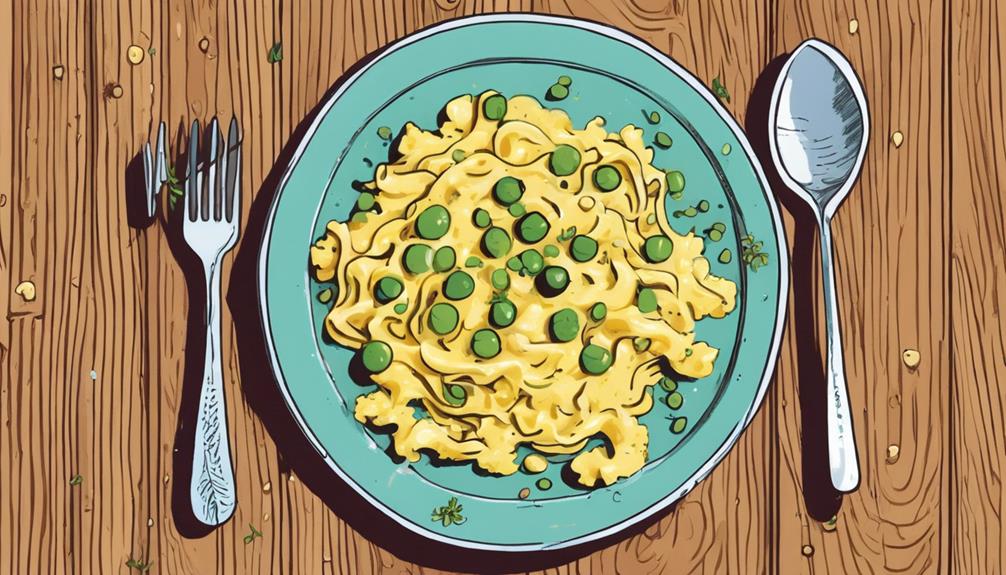
Scrambled eggs and soft pasta are fantastic additions to your baby's diet, providing nutritious options that are easy for them to handle and enjoy. These foods are great finger foods for babies without teeth, offering a good source of protein and essential nutrients.
When preparing scrambled eggs, verify they're cooked until soft and cut into small pieces for safe self-feeding. Elbow pasta, cooked until tender, is also perfect. You can serve it plain or with mild sauces to introduce new flavors and textures.
Here's a quick comparison for you:
| Food Item | Benefits |
|---|---|
| Scrambled Eggs | High in protein, easy to gum |
| Soft Pasta | Encourages self-feeding, diverse textures |
Introduce these foods around 6 to 8 months, depending on your baby's readiness. Always monitor for allergic reactions when introducing eggs for the first time. Offering a variety of flavors and textures not only enhances their experience but also helps develop a diverse palate. Your baby will love exploring these nutritious options!
Tips for Feeding Babies
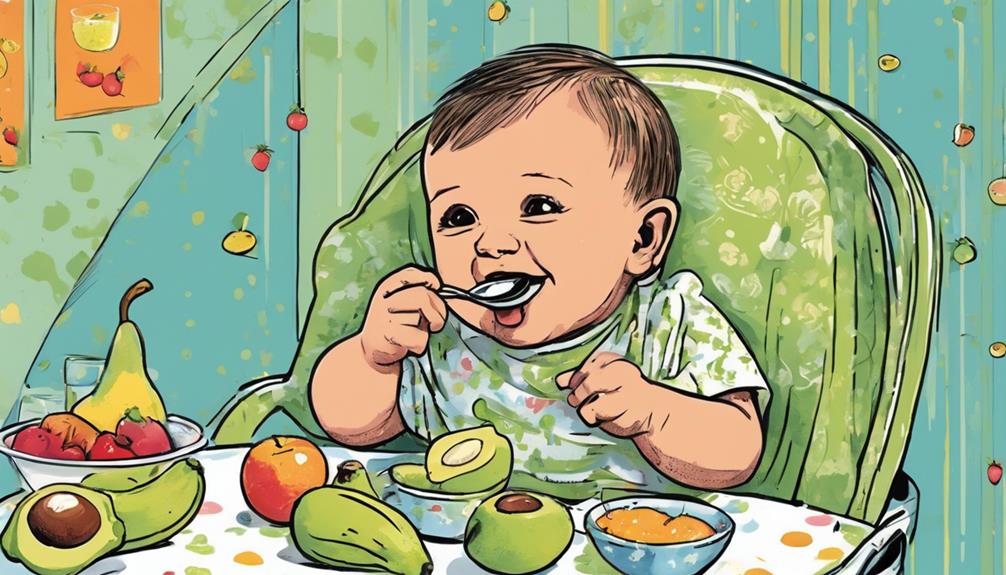
When feeding your baby, focus on offering a variety of soft, nutritious foods that are easy for them to gum and swallow. Here are some tips to guarantee a safe and enjoyable feeding experience:
- Choose soft finger foods: Foods like mashed bananas, avocados, and well-cooked sweet potatoes are ideal for babies without teeth.
- Introduce new foods carefully: Always introduce new foods one at a time, waiting 3 to 5 days between each to monitor for allergies.
- Cut into small pieces: Make sure to cut foods into small, manageable pieces, about the size of a pea or your baby's pinky fingernail, to prevent choking hazards.
- Supervise at mealtime: Always supervise babies as they eat, watching for any signs of choking and guaranteeing a safe environment.
Offering a mix of textures and flavors will help develop a diverse palate and encourage healthy eating habits as they grow.
Frequently Asked Questions
What Foods Can You Give a Baby With No Teeth?
When feeding a baby without teeth, you'll want to offer soft foods like mashed bananas, avocados, and cooked sweet potatoes. Scrambled eggs and pureed veggies are also great options for easy gumming and swallowing. When introducing solid foods to your baby, be sure to start with small portions and gradually increase the amount as they become more comfortable with chewing and swallowing. It’s important to monitor your baby closely during mealtime to ensure they are not at risk of choking. As they get more accustomed to solid foods, you can begin introducing a wider variety of textures and flavors to help develop their palate.
What Can Babies Eat for Dinner With No Teeth?
Imagine you're feeding your toothless baby dinner. You can serve scrambled eggs, which are soft and nutritious. They're easy to gum, making mealtime enjoyable and safe for your little one.
What Foods Are Easy to Eat Without Teeth?
When you think about foods easy to eat without teeth, focus on soft options like ripe bananas, cooked vegetables, and scrambled eggs. These choices provide essential nutrients while being gentle on your gums.
Can My Baby Eat Eggs Without Teeth?
Absolutely, your little one can enjoy eggs, even without those pearly whites! Just make sure they're well-cooked and cut into small pieces. Scrambled eggs are soft, nutritious, and a great choice for early eaters.
What are some safe and delicious snacks for babies without teeth?
When it comes to the best snacks for babies without teeth, there are plenty of options to choose from. Soft fruits like bananas and ripe peaches are perfect for little ones to gum on. Cooked vegetables, like sweet potatoes or carrots, are also safe and delicious options for baby snacks.
Conclusion
To summarize, introducing finger foods to your toothless baby can be a fun and nutritious adventure.
Did you know that around 80% of babies start experimenting with solid foods by six months? This early exposure helps develop their taste preferences and fine motor skills.
By offering soft, safe options like sweet potatoes and bananas, you're not just feeding them; you're laying the foundation for healthy eating habits.
Enjoy this exciting stage together!









